Synthesis and Characterization of ZnO-Nanostructured Particles Produced by Solar Ablation
Abstract
:1. Introduction
- Solar propulsion: Solar ablation can be used as a force by evaporating a material from the bulk surface.
- Solar thermal energy: Solar ablation can be used to generate heat by evaporating a material, such as water, from a solar collector. The heat can then be used to generate electricity or to heat water [14].
- Solar micromachining: Solar ablation can be used to create small, precise features on a surface, such as those used in integrated circuits.
- Controlling the ablation process: The ablation process is very sensitive to ray power, beam spot size, and pulse duration. It is difficult to control these parameters precisely, which can lead to uneven ablation and poor surface quality.
- Minimizing material damage: The solar ablation process can also damage the underlying material, which can reduce the lifetime of the ablated surface.
- Increasing the ablation rate: The ablation rate is typically very slow, which limits the applications of solar ablation.
2. Materials and Methods
2.1. Elaboration by Solar Ablation of Pure and Ni-Doped Zinc Oxide Nanoparticles
2.2. Characterization of Nanoparticles
3. Discussion
3.1. Structural Analysis
3.2. Morphological Analysis
3.3. Optical Characterization
4. Conclusions
Author Contributions
Funding
Institutional Review Board Statement
Informed Consent Statement
Data Availability Statement
Conflicts of Interest
References
- Baig, N.; Kammakakam, I.; Falath, W. Nanomaterials: A review of synthesis methods, properties, recent progress, and challenges. Mater. Adv. 2021, 2, 1821–1871. [Google Scholar] [CrossRef]
- Xing, T.; Sunarso, J.; Yang, W.; Yin, Y.; Glushenkov, A.M.; Li, L.H.; Howlett, P.C. Ball milling: A green mechanochemical approach for synthesis of nitrogen doped carbon nanoparticles. Nanoscale 2013, 5, 7970–7976. [Google Scholar] [CrossRef] [PubMed]
- Fernández-Arias, M.; Vilas, A.M.; Boutinguiza, M.; Rodríguez, D.; Arias-González, F.; Pou-Álvarez, P.; Riveiro, A.; Gil, J.; Pou, J. Palladium Nanoparticles Synthesized by Laser Ablation in Liquids for Antimicrobial Applications. Nanomaterials 2022, 12, 2621. [Google Scholar] [CrossRef] [PubMed]
- Acsente, T.; Carpen, L.G.; Matei, E.; Bita, B.; Negrea, R.; Bernard, E.; Grisolia, C.; Dinescu, G. Tungsten Nanoparticles Produced by Magnetron Sputtering Gas Aggregation: Process Characterization and Particle Properties. In Progress in Fine Particle Plasmas; Mieno, T., Hayashi, Y., Xue, K., Eds.; IntechOpen: London, UK, 2020. [Google Scholar] [CrossRef]
- Manikam, V.M.; Cheong, K.Y.; Razak, K.A. Chemical reduction methods for synthesizing Ag and Al nanoparticles and their respective nanoalloys. Mat. Sci. Eng. B 2011, 176, 187–203. [Google Scholar] [CrossRef]
- Thiagarajan, S.; Sanmugam, A.; Vikraman, D. Facile Methodology of Sol-Gel Synthesis for Metal Oxide Nanostructures. In Recent Applications in Sol-Gel Synthesis; Rijek, C.U., Ed.; IntechOpen: London, UK, 2017. [Google Scholar] [CrossRef]
- Michael Pomeroy, M. (Ed.) Encyclopedia of Materials: Technical Ceramics and Glasses; Elsevier: Amsterdam, The Netherlands, 2021; ISBN 978-0-12-822233-1. [Google Scholar]
- Rahaman, S.M.; Chakraborty, M.; Kundu, S.; Dhibar, S.; Kumar, D.; Ibrahim, S.M.; Chakravarty, M.; Saha, B. Controlled synthesis of samarium trifluoride nanoparticles in a water-in-oil microemulsion: Effects of water-to-surfactant ratio on particles and phosphate removal. J. Hazard. Mater. 2023, 11, 100348. [Google Scholar] [CrossRef]
- Kouam, J.; Ait-Ahcene, T.; Plaiasu, A.G.; Abrudeanu, M.; Motoc, A.; Beche, E.; Monty, C. Characterization and properties of ZnO based nanopowders prepared by solar physical vapor deposition (SPVD). Sol. Energy 2008, 82, 226–238. [Google Scholar] [CrossRef]
- Smits, K.; Grigorjeva, L.; Millers, D.; Kundzins, K.; Ignatans, R.; Grabis, J.; Monty, C. Luminescence properties of zirconia nanocrystals prepared by solar physical vapor deposition. Opt. Mater. 2014, 37, 251–256. [Google Scholar] [CrossRef]
- Pascu, A.; Stanciu, E.M.; Croitoru, C.; Roată, I.C.; Tierean, M.H. Carbon Nanoparticle-Supported Pd Obtained by Solar Physical Vapor Deposition. Adv. Mat. Sci. Eng. 2018, 2018, 4730192. [Google Scholar] [CrossRef]
- Stanciu, M.; Pascu, A.; Roată, I.; Croitoru, C.; Tierean, M.; Rosca, J.M.; Hulka, I. Solar radiation synthesis of functional carbonaceous materials using Al2O3/TiO2-Cu-HA doped catalyst. Appl. Sur. Sci. 2018, 438, 33–40. [Google Scholar] [CrossRef]
- Croitoru, C.; Pascu, A.; Stanciu, E.M.; Roata, I.C. Solar synthesis of carbon microparticles from polymer waste. Mater. Today Proc. 2019, 19, 996–1002. [Google Scholar] [CrossRef]
- Sainz-Mañas, M.; Bataille, F.; Caliot, C.; Vossier, A.; Flamant, G. Direct absorption nanofluid-based solar collectors for low and medium temperatures. A review. Energy 2022, 260, 124916. [Google Scholar] [CrossRef]
- Zuorro, A.; Iannone, A.; Miglietta, S.; Lavecchia, R. Green Synthesis of Silver Nanoparticles Using Spent Coffee Ground Extracts: Process Modelling and Optimization. Nanomaterials 2022, 12, 2597. [Google Scholar] [CrossRef] [PubMed]
- Zhao, J.; Liu, X. Electron microscopic methods (TEM, SEM and energy dispersal spectroscopy). In Encyclopedia of Soils in the Environment, 2nd ed.; Goss, M.J., Oliver, M., Eds.; Academic Press: Cambridge, MA, USA, 2023; pp. 575–588. ISBN 978032395133. [Google Scholar]
- Venkatesham, M.; Ayodhya, D.; Madhusudhan, A.; Santoshi Kumari, A.; Veerabhadram, G.; Mangatayaru, K.G. A Novel Green Synthesis of Silver Nanoparticles Using Gum Karaya: Characterization, Antimicrobial and Catalytic Activity Studies. J. Clust. Sci. 2013, 25, 409–422. [Google Scholar] [CrossRef]
- Vorontsov, A.V.; Tsybulya, S.V. Influence of Nanoparticles Size on XRD Patterns for Small Monodisperse Nanoparticles of Cu0 and TiO2 Anatase. Ind. Eng. Chem. Res. 2018, 57, 2526–2536. [Google Scholar] [CrossRef]
- Thomasm, S.; Thomas, R.; Zachariah, A.J.; Mishra, R.K. (Eds.) Spectroscopic Methods for Nanomaterials Characterization, A Volume in Micro and Nano Technologies; Elsevier Inc.: Amsterdam, The Netherlands, 2017; ISBN 978-0-323-46140-5. [Google Scholar]
- Taniguchi, K.; Maeo, S. Quantitative Analysis of Nanoparticle by XRF. In Proceedings of the Fourth International Symposium on Nuclear and Related Techniques NURT 2003, VIII Workshop on Nuclear Physics WONP 2003, La Habana, Cuba, 27–31 October 2003; Cubaenergia: Havana, Cuba, 2003. [Google Scholar]
- Das, P.; Das, M.K. Production and physicochemical characterization of nanocosmeceuticals. In Nanocosmeceuticals; Das, M.K., Ed.; Academic Press: Cambridge, MA, USA, 2022; pp. 95–138. ISBN 9780323910774. [Google Scholar] [CrossRef]
- The Global Market for Metal Oxide Nanoparticles to 2020. Available online: http://www.researchandmarkets.com/reports/2488811/the_global_market_for_metal_oxide_nanopar (accessed on 10 July 2023).
- Husen, A.; Iqbal, M. Nanomaterials and Plant Potential: An Overview. In Nanomaterials and Plant Potential; Husen, A., Iqbal, M., Eds.; Springer: Cham, Switzerland, 2019. [Google Scholar] [CrossRef]
- Dung, C.T.; Quynh, L.M.; Hong, T.T.; Nam, N.H. Synthesis, magnetic properties and enhanced photoluminescence of Fe3O4-ZnO heterostructure multifunctional nanoparticles. VNU J. Sci. Math. Phys. 2017, 33, 14–21. [Google Scholar]
- Sun, Y.; Tian, Y.; He, M.; Zhao, Q.; Chen, C.; Hu, C.; Liu, Y. Controlled synthesis of Fe3O4/Ag core-shell composite nanoparticles with high electrical conductivity. J. Electron. Mater. 2011, 41, 519–523. [Google Scholar] [CrossRef]
- Lu, A.-H.; Salabas, E.L.; Schuth, F. Magnetic nanoparticles: Synthesis, protection, functionalization, and application. Angew. Chem. Int. Ed. 2007, 46, 1222–1244. [Google Scholar] [CrossRef]
- Dung, C.T.; Loc, N.Q.; Huong, P.T.; Duong, D.T.T.; Hong, T.T.; Quynh, L.M. Combination of 4-ATP coated silver nanoparticles and magnetic Fe3O4 nanoparticles by inverse emulsion method. VNU J. Sci. Math. Phys. 2014, 30, 1–9. [Google Scholar]
- Khuat, N.T.; Nguyen, V.T.A.; Phan, T.N.; Hoang, L.H.; Thach, C.V.; Hai, N.H. Sorting CD4+ T cells in blood by using magnetic nanoparticles coated with anti-CD4 antibody. J. Korean Phys. Soc. 2008, 53, 3832–3836. [Google Scholar] [CrossRef]
- Sharma, G.; Jeevanandam, P. A facile synthesis of multifunctional iron oxide@Ag core–shell nanoparticles and their catalytic applications. Eur. J. Inorg. Chem. 2013, 36, 6126–6136. [Google Scholar] [CrossRef]
- Salgueirino-Maceira, V.; Correa-Duarte, M.A. Increasing the complexity of magnetic core/shell structured nanocomposites for biological application. Adv. Mater. 2007, 19, 4131–4144. [Google Scholar] [CrossRef]
- West, J.L.; Halas, N.J. Application of nanotechnology to biotechnology: Commentary. Curr. Opin. Biotechnol. 2000, 11, 215–217. [Google Scholar] [CrossRef] [PubMed]
- Nguyen, H.L.; Nguyen, H.N.; Nguyen, H.H.; Luu, M.Q.; Nguyen, M.H. Nanoparticles: Synthesis and applications in life science and environmental technology. Adv. Nat. Sci. Nanosci. Nanotechnol. 2015, 6, 015008. [Google Scholar] [CrossRef]
- Filipponi, L.; Sutherland, D. Environment: Application of nanotechnologies. In Nanoyou Teachers Training Kit in Nanotechnologies; Aarhus University: Aarhus, Denmark, 2010; pp. 1–26. [Google Scholar]
- Chaudhuri, R.G.; Paria, S. Core/shell nanoparticles: Classes, properties, synthesis mechanisms, characterization, and applications. Chem. Rev. 2012, 112, 2373–2433. [Google Scholar] [CrossRef] [PubMed]
- Sondi, I.; Salopek-Sondi, B. Silver nanoparticles as antimicrobial agent: A case study on E. coli as a model for Gram-negative bacteria. J. Colloid Interface Sci. 2004, 275, 177–182. [Google Scholar] [CrossRef] [PubMed]
- Ioța, M.-A.; Cursaru, L.-M.; Șchiopu, A.-G.; Tudor, I.A.; Motoc, A.-M.; Piticescu, R.M. Fe3O4 Core–Shell Nanostructures with Anticancer and Antibacterial Properties: A Mini-Review. Processes 2023, 11, 1882. [Google Scholar] [CrossRef]
- Faria, P.C.C.; Monteiro, D.C.M.; Órfão, J.J.M.; Pereira, M.F.R. Cerium, manganese and cobalt oxides as catalysts for the ozonation of selected organic compounds. Chemosphere 2009, 74, 818–824. [Google Scholar] [CrossRef]
- Zhang, J.; Liu, J.; Peng, Q.; Wang, X.; Li, Y. Nearly Monodisperse Cu2O and CuO Nanospheres: Preparation and Applications for Sensitive Gas Sensors. Chem. Mater. 2006, 18, 867–871. [Google Scholar] [CrossRef]
- Wang, L.; Ding, Z.L.; Qi, H.B.; Li, Q.; Hou, Z.Z.; Wang, J.Q. Synthesis of ITO Nanoparticles by Liquid Phase Co-Precipitation. Method Adv. Mater. Res. 2010, 148–149, 1556–1561. [Google Scholar] [CrossRef]
- Hasnidawani, J.N.; Azlina, H.N.; Norita, H.; Bonnia, N.N.; Ratim, S.; Ali, E.S. Synthesis of Zn Nanostructures Using Sol-Gel Method. Procedia Chem. 2016, 19, 211–216. [Google Scholar] [CrossRef]
- Byrappa, K.; Adschiri, T. Hydrothermal technology for nanotechnology. Prog. Cryst. Growth Charact. Mater. 2007, 53, 117–166. [Google Scholar] [CrossRef]
- Horikoshi, S.; Serpone, N. Nanoparticle Synthesis through Microwave Heating Book; Horikoshi, S., Serpone, N., Eds.; Wiley: Hoboken, NJ, USA, 2013. [Google Scholar] [CrossRef]
- Solero, G. Synthesis of Nanoparticles through Flame Spray Pyrolysis: Experimental Apparatus and Preliminary Results. Nanosci. Nanotechnol. 2017, 7, 21–25. [Google Scholar]
- Xu, C.K.; Liu, Y.K.; Xu, G.D.; Wang, G.H. Preparation and characterization of CuO nanorods by thermal decomposition of CuC2O4 precursor. Mat. Res. Bull. 2002, 37, 2365–2372. [Google Scholar] [CrossRef]
- Luong, N.H.; Hai, N.H.; Phu, N.D.; MacLaren, D.A. Co-Pt nanoparticles encapsulated in carbon cages prepared by sonoelectrodeposition. Nanotechnology 2011, 22, 285603. [Google Scholar] [CrossRef] [PubMed]
- Xu, H.; Zeigera, B.W.; Suslick, K.S. Sonochemical synthesis of nanomaterials. Chem. Soc. Rev. 2013, 42, 2555–2567. [Google Scholar] [CrossRef] [PubMed]
- Liu, X.; Chang, Z.; Luo, L.; Lei, X.; Liu, J.; Sun, X. Sea urchin-like Ag-α-Fe2O3 nanocomposite microspheres: Synthesis and gas sensing applications. J. Mater. Chem. 2012, 22, 7232–7238. [Google Scholar] [CrossRef]
- Tsuzuki, T. Mechanochemical synthesis of metal oxide nanoparticles. Commun. Chem. 2021, 4, 143. [Google Scholar] [CrossRef] [PubMed]
- Khurshed, A.S.; Bilal, A.T. Synthesis of carbon nanotubes by catalytic chemical vapour deposition: A review on carbon sources, catalysts and substrates. Mat. Sci. Sem. Proc. 2016, 41, 67–82. [Google Scholar] [CrossRef]
- Chai, C. The Global Market for Zinc Oxide Nanopowders 2012. In New Report on Global Zinc Oxide Nanopowder Market; Fact. MR: Rockville, MD, USA, 2012; pp. 135–140. [Google Scholar]
- Devi, N.; Sahoo, S.; Kumar, R.; Singh, R.K. A review of the microwave-assisted synthesis of carbon nanomaterials, metal oxides/hydroxides and their composites for energy storage applications. Nanoscale 2021, 13, 11679–11711. [Google Scholar] [CrossRef]
- Chauhan, S.; Tirkey, A.; Sheo, L.; Upadhyay, B. Chapter 22—Nanomaterials in biomedicine: Synthesis and applications. In Nanotechnology in Biomedicine, Advances in Nanotechnology-Based Drug Delivery Systems; Talukdar, A.D., Sarker, S.D., Patra, J.K., Eds.; Elsevier: Amsterdam, The Netherlands, 2022; pp. 585–604. ISBN 9780323884501. [Google Scholar] [CrossRef]
- Morkoç, H.; Özgür, Ü. Chapter 1 General Properties of ZnO. In Zinc Oxide: Fundamentals, Materials and Device Technology; Wiley-VCH: Weinheim, Germany, 2009. [Google Scholar]
- Mikhailov, M.M.; Lapin, A.N.; Yuryev, S.A.; Goronchko, V.A. Optical Properties of ZnO Powders Modified with ZnO Nanoparticles. Russ. Phys. J. 2022, 65, 1239–1245. [Google Scholar] [CrossRef]
- Sulciute, A.; Nishimura, K.; Gilshtein, E.; Cesano, F.; Viscardi, G.; Nasibulin, A.G.; Ohno, Y.; Rackauskas, S. ZnO Nanostructures Application in Electrochemistry: Influence of Morphology. J. Phys. Chem. C 2021, 125, 1472–1482. [Google Scholar] [CrossRef]
- Moumen, A.; Kaur, N.; Poli, N.; Zappa, D.; Comini, E. One Dimensional ZnO Nanostructures: Growth and Chemical Sensing Performances. Nanomaterials 2020, 29, 1940. [Google Scholar] [CrossRef] [PubMed]
- Plaiasu, A.G.; Ducu, M.C.; Moga, S.G.; Negrea, A.D.; Modan, E.M. Nanostructured transition metal oxides obtained by SPVD. Manuf. Rev. 2020, 7, 12. [Google Scholar] [CrossRef]
- Schlur, L.; Calado, J.R.; Spitzer, D. Synthesis of zinc oxide nanorods or nanotubes on one side of a microcantilever. R. Soc. 2018, 5, 8. [Google Scholar] [CrossRef]
- Gui, Z.; Liu, J.; Wang, Z.; Song, L.; Hu, Y.; Fan, W.; Chen, D. From Multicomponent precursor to nanoparticle nanoribbons of ZnO. J. Phys. Chem. B 2005, 109, 1113–1117. [Google Scholar] [CrossRef] [PubMed]
- Alsultany, F.H.; Majdi, H.S.; Abd, H.R. Catalytic Growth of 1D ZnO Nanoneedles on glass substrates Through Vapor Transport. J. Electron. Mater. 2019, 48, 1660–1668. [Google Scholar] [CrossRef]
- Wu, J.J.; Liu, S.C.; Wu, C.T.; Chen, K.H.; Chen, L.C. Heterostructures of ZnO–Zn coaxial nanocables and ZnO nanotubes. Appl. Phys. Lett. 2002, 81, 1312–1314. [Google Scholar] [CrossRef]
- Shi, X.; Cao, M.; Zhao, Y. Preparation and properties of ZnO nano-whiskers. Sci. China Ser. E-Technol. Sci. 2008, 51, 1433–1438. [Google Scholar] [CrossRef]
- Plaiasu, A.G.; Topala, C.M.; Dinu, A.; Abrudeanu, M.; Sutan, C. Copper Oxides Nanopowders Synthesis by SPVD and Characterization. Rev. Chim. 2015, 66, 1636–1638. [Google Scholar]
- Hussain, S.; Amu-Darko, J.N.O.; Wang, M.; Alothman, A.A.; Ouladsmane, M.; Aldossari, S.A.; Khan, M.S.; Qiao, G.; Liu, G. CuO-decorated MOF derived ZnO polyhedral nanostructures for exceptional H2S gas detection. Chemosphere 2023, 317, 137827. [Google Scholar] [CrossRef]
- Barbe, T.; Flamant, G.; Nadal, E.; Vossier, A.; Olalde, G.; Gordon, J.M.; Bataille, F. Elucidating the gas flow dynamics in a nanomaterial synthesis solar reactor. Chem. Eng. J. 2022, 442, 135846. [Google Scholar] [CrossRef]
- Guillot, E.; Rodriguez, R.; Boullet, N.; Sans, J.L. Some details about the third rejuvenation of the 1000 kWth solar furnace in Odeillo: Extreme performance heliostats. In Proceedings of the AIP Conference Proceedings, Santiago, Chile, 26–29 September 2018; Volume 2033, p. 040016. [Google Scholar] [CrossRef]
- International Centre for Diffraction Data. PDF-4 + 2022. PDF-4 +/Web. 2022. Available online: www.icdd.com/pdf-4/ (accessed on 5 May 2023).
- Liu, S.; Yang, W.; Liu, L.; Chen, H.; Liu, Y. Enhanced H2S Gas-Sensing Performance of Ni-Doped ZnO Nanowire Arrays. ACS Omega 2023, 8, 7595–7601. [Google Scholar] [CrossRef] [PubMed]
- Schütt, F.; Postica, V.; Adelung, R.; Lupan, O. Single and Networked ZnO–CNT Hybrid Tetrapods for Selective Room-Temperature High-Performance Ammonia Sensors. ACS Appl. Mater. Interfaces 2017, 27, 23107–23118. [Google Scholar] [CrossRef] [PubMed]
- Yan, L.; Uddin, A.; Wang, H. Nanomaterials and Nanotechnology ZnO Tetrapods: Synthesis and Applications in Solar Cells. Nanomater. Nanotechnol. 2015, 5, 19. [Google Scholar] [CrossRef]
- Bari, A.R.; Shinde, M.D.; Vinita, D.; Patil, L.A. Effect of Solvents on the Particle Morphology of nanostructured ZnO. Indian J. Pure Appl. Phys. 2009, 47, 24–27. [Google Scholar]
- Salem, J.K.; Hammad, T.M.; Harrison, R.R. Synthesis, structural and optical properties of Ni-doped ZnO micro-spheres. J. Mater. Sci. Mater. Electron. 2013, 24, 1670–1676. [Google Scholar] [CrossRef]
- Radovanovic, P.V.; Gamelin, D.R. High-Temperature Ferromagnetism in Ni2+-Doped ZnO Aggregates Prepared from Colloidal Diluted Magnetic Semiconductor Quantum Dots. Phys. Rev. Lett. 2003, 91, 157202. [Google Scholar] [CrossRef]
- Deka, S.; Joy, P.A. Synthesis and Characterization of ZnO and Ni Doped ZnO. Chem. Mater. 2005, 17, 6507. [Google Scholar] [CrossRef]
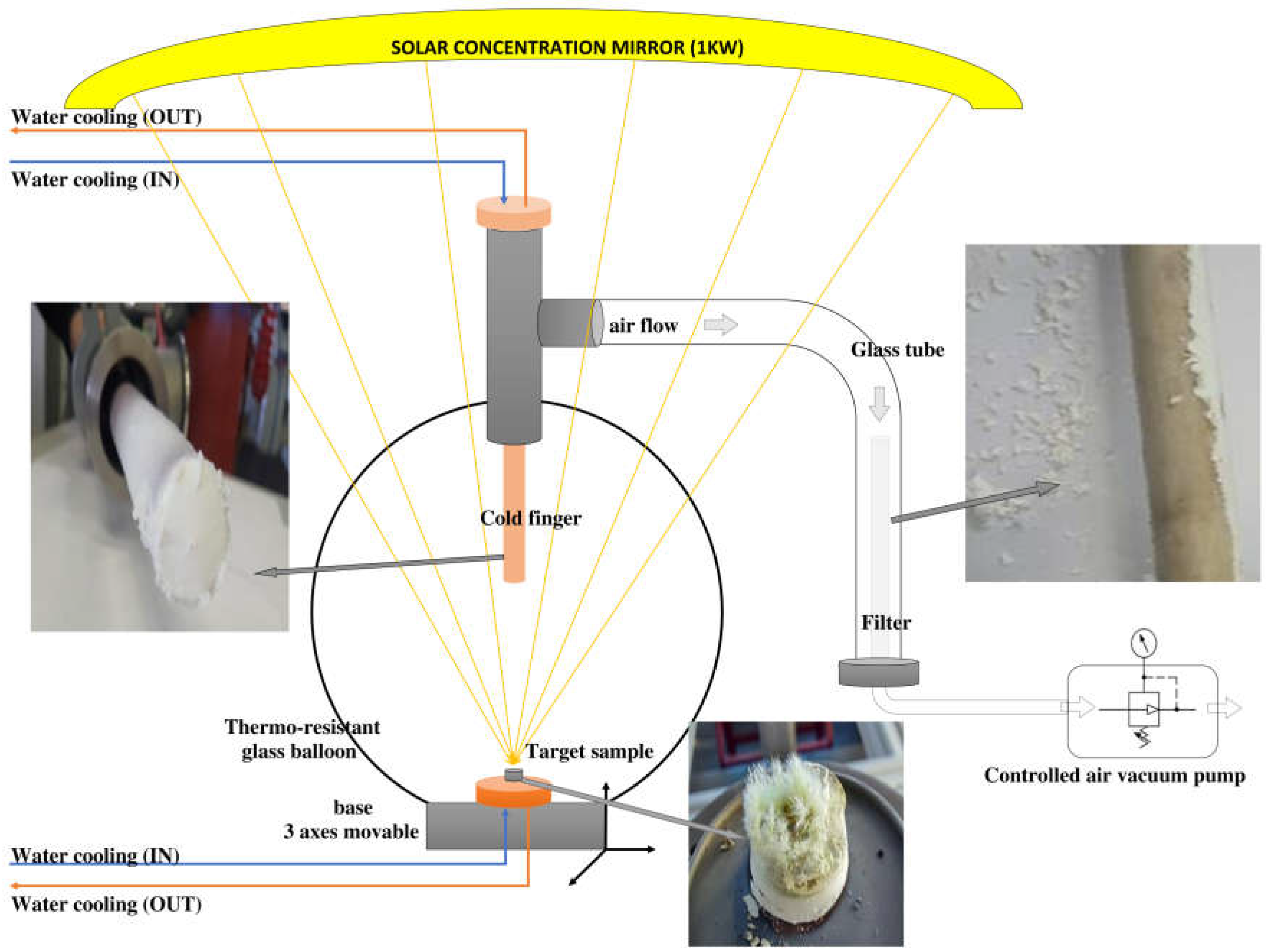
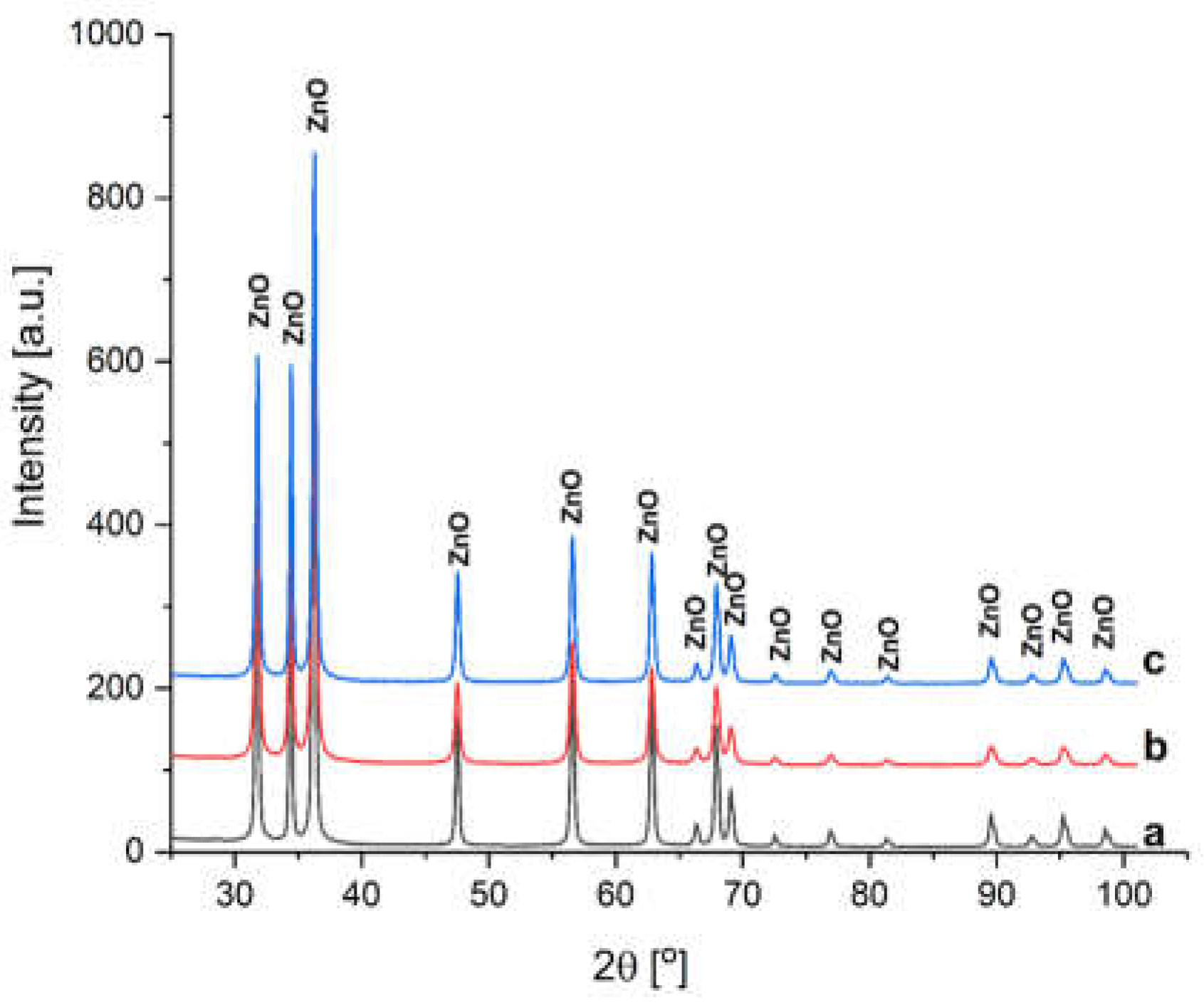
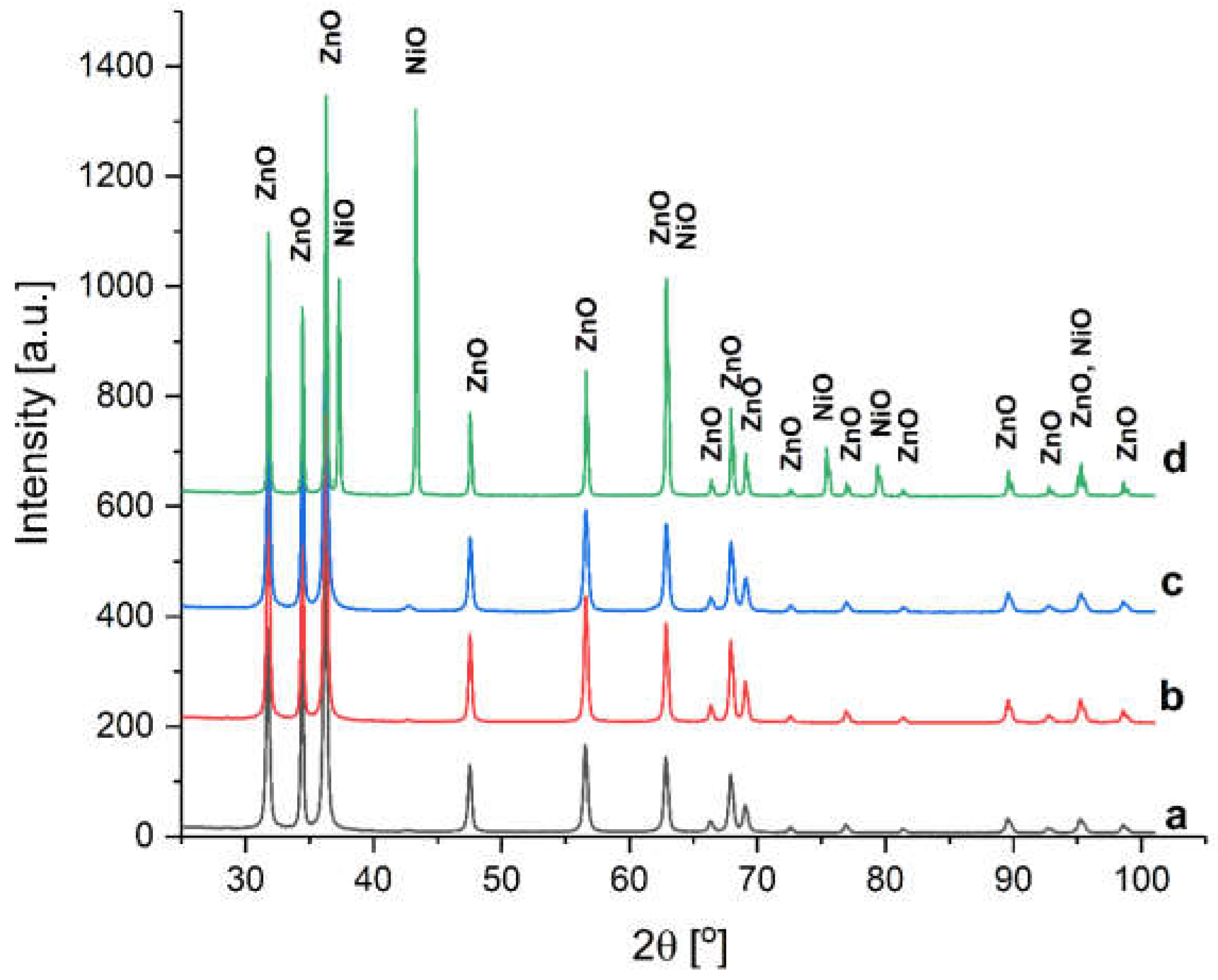
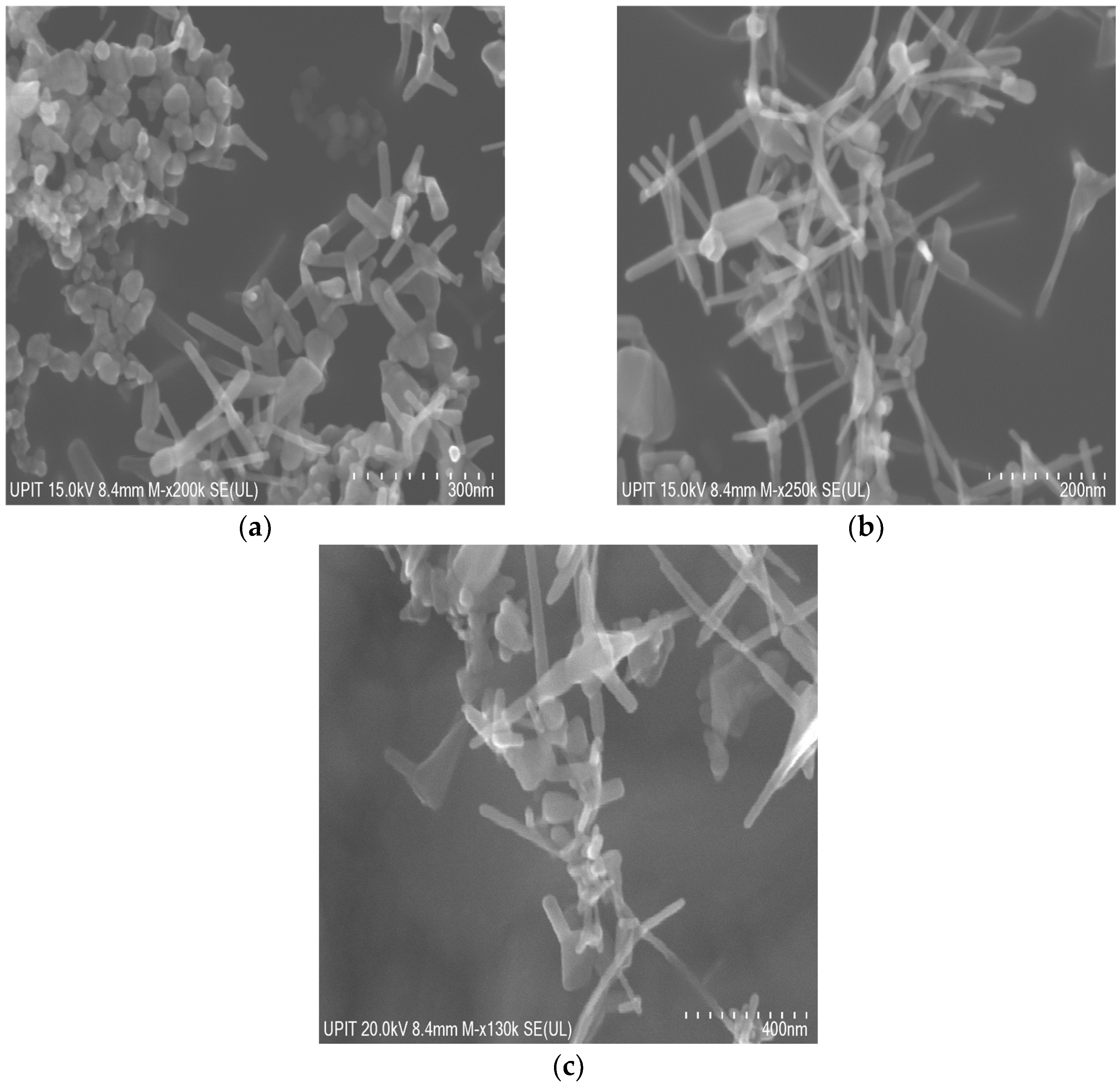

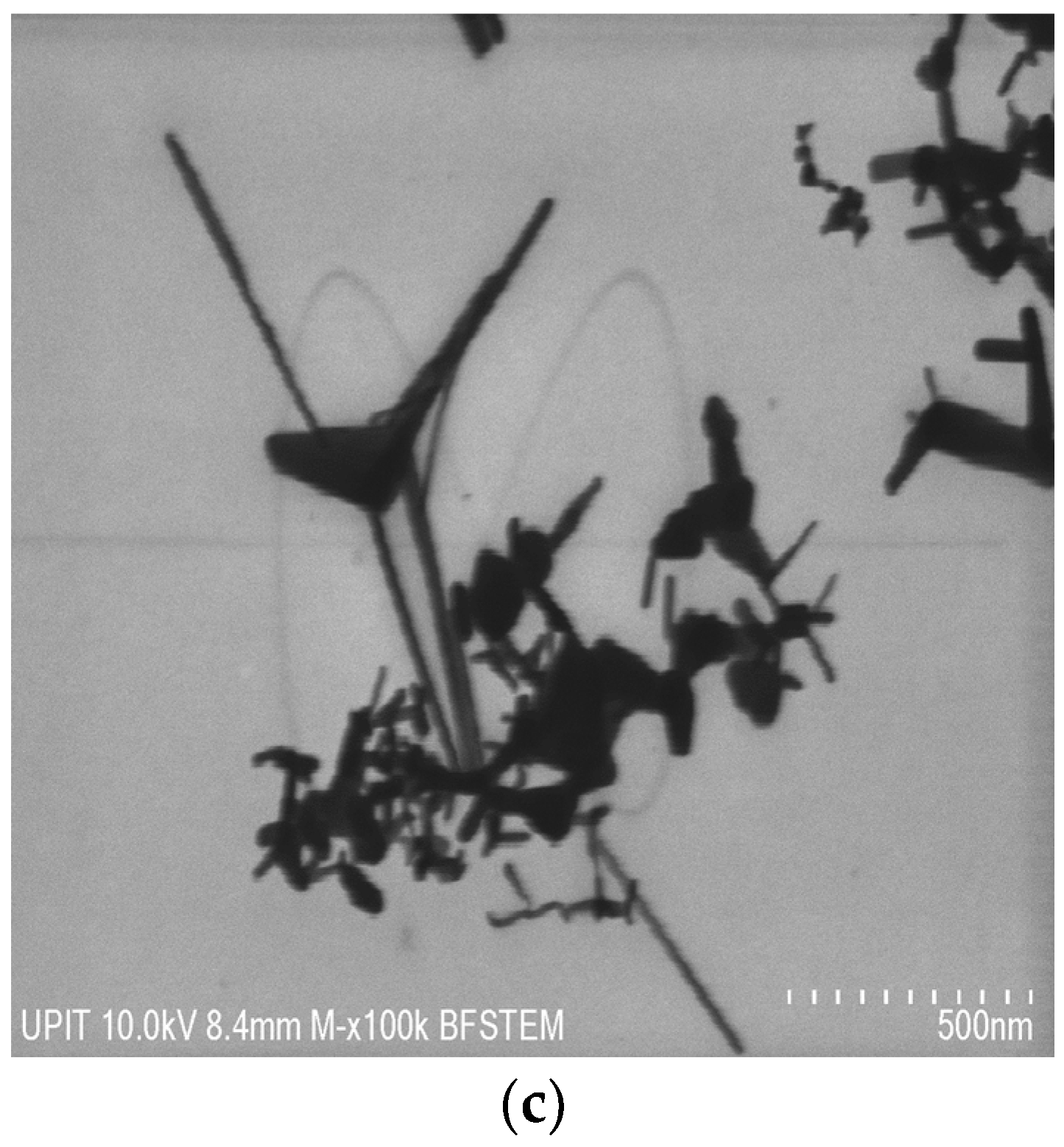
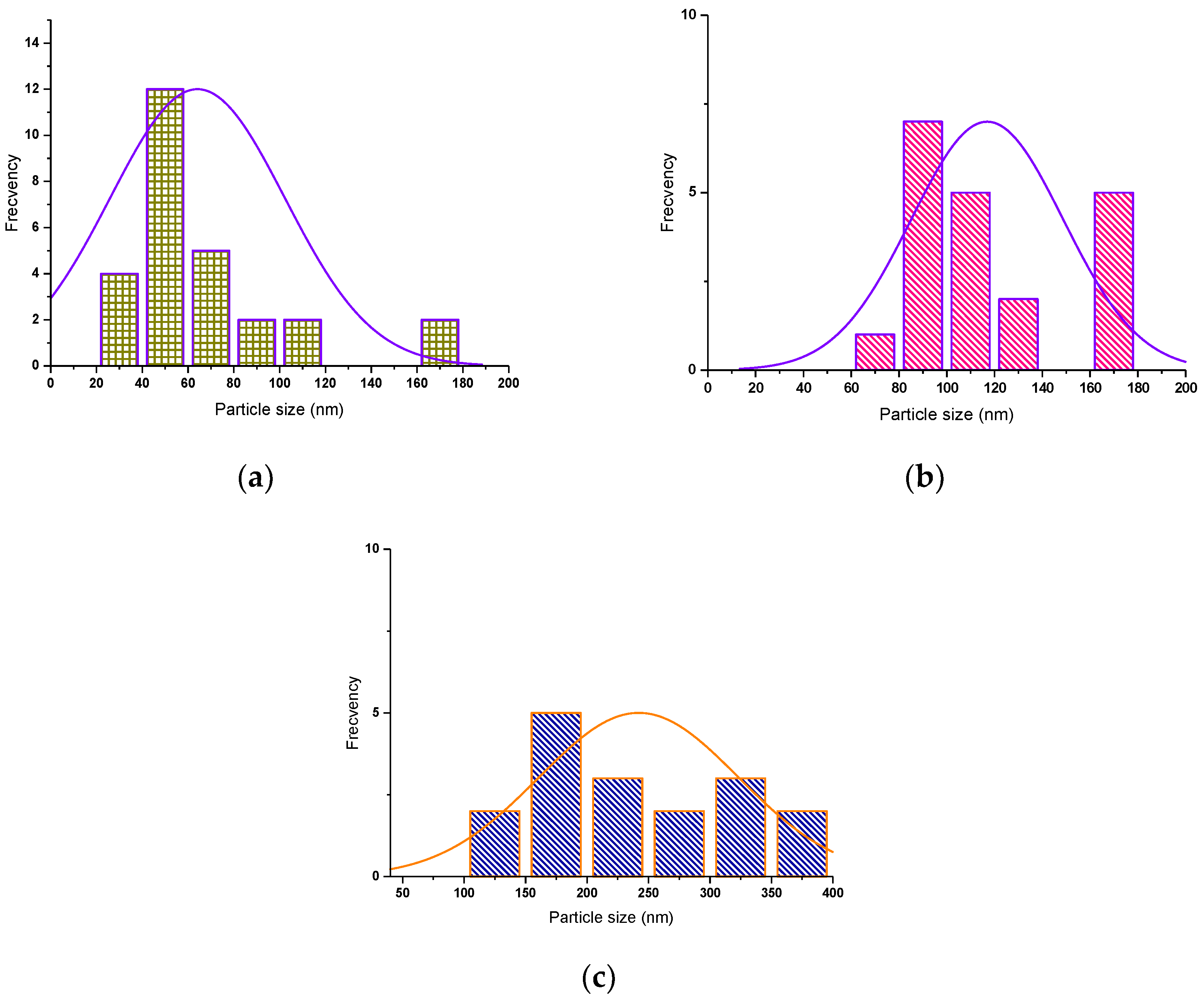
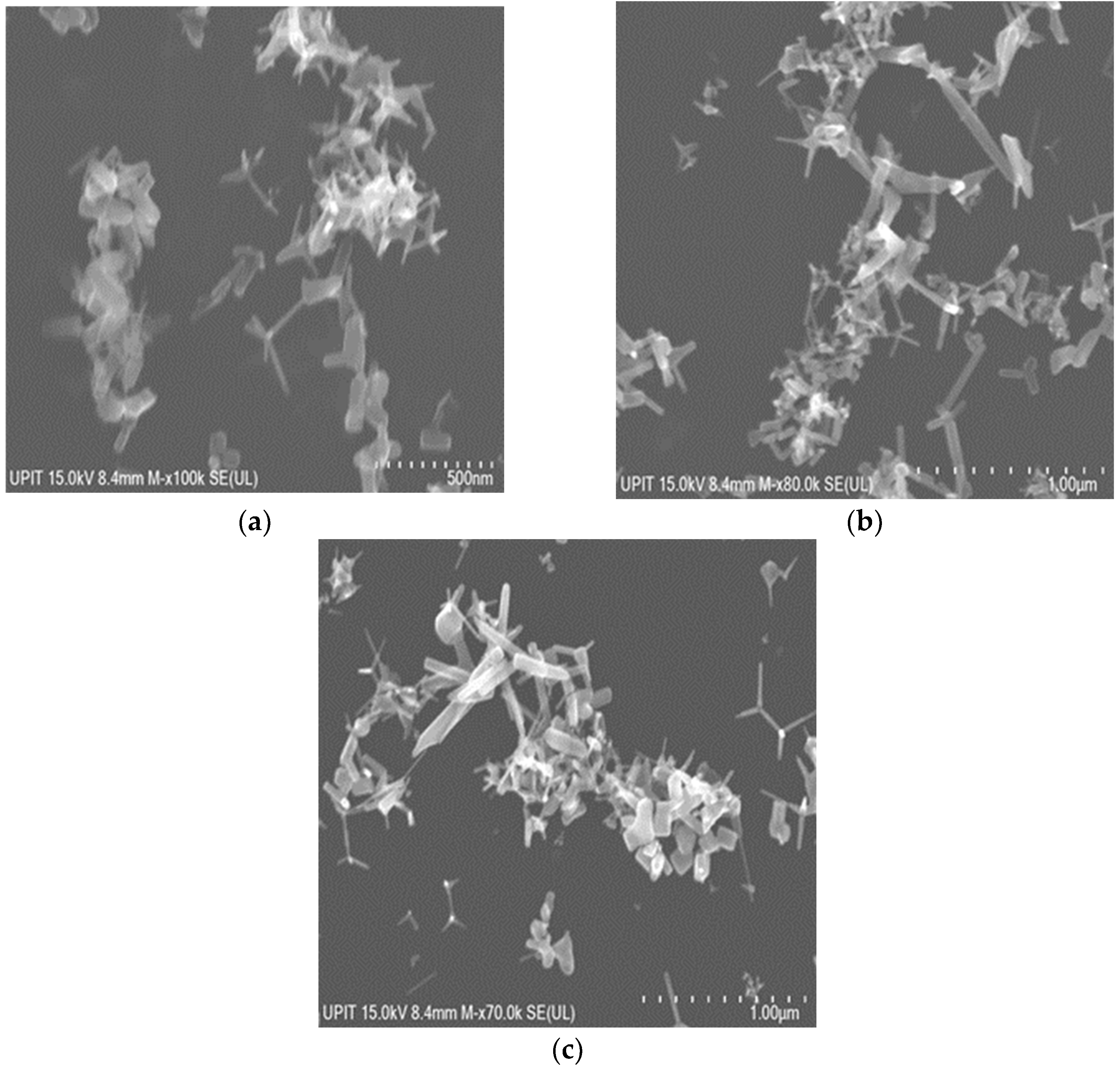


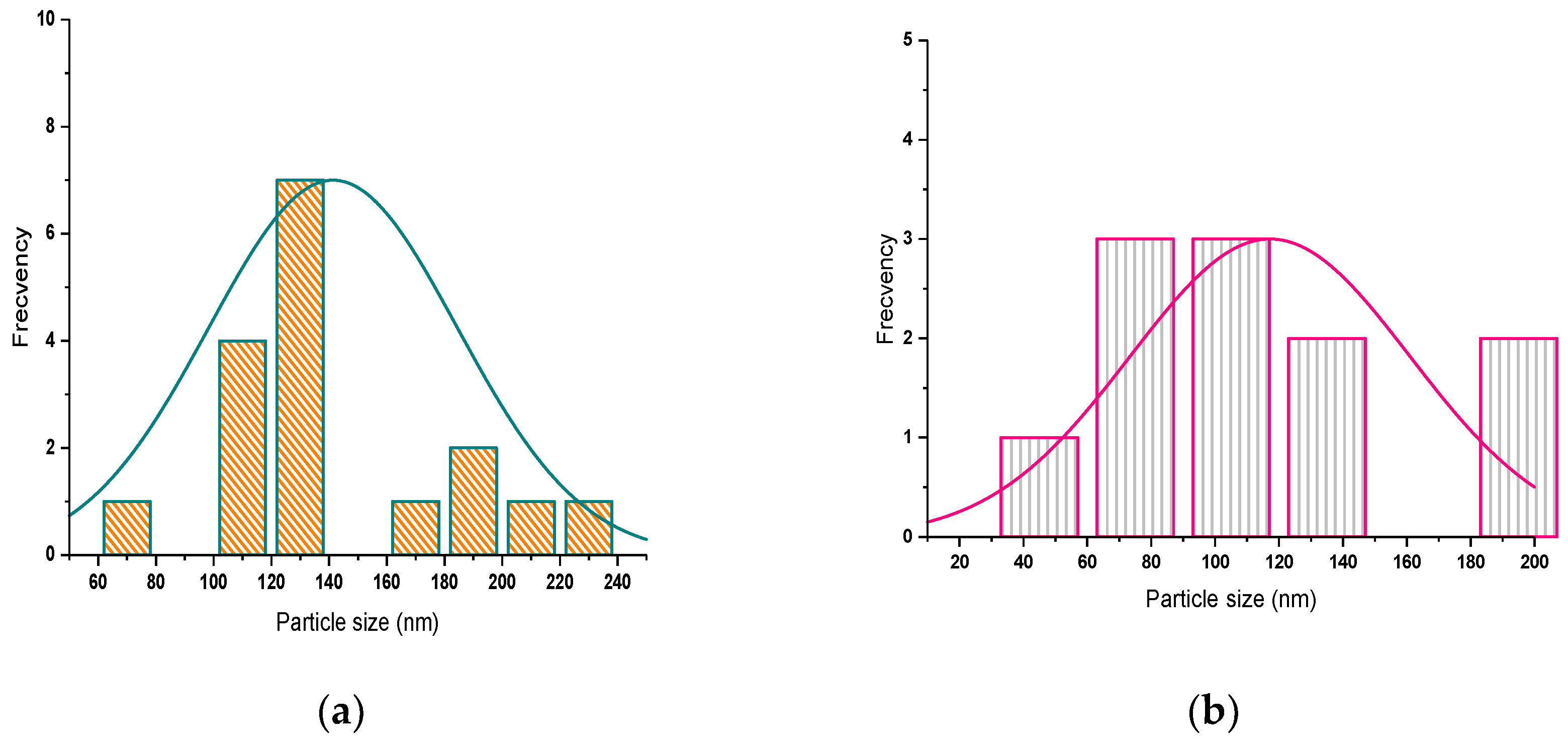


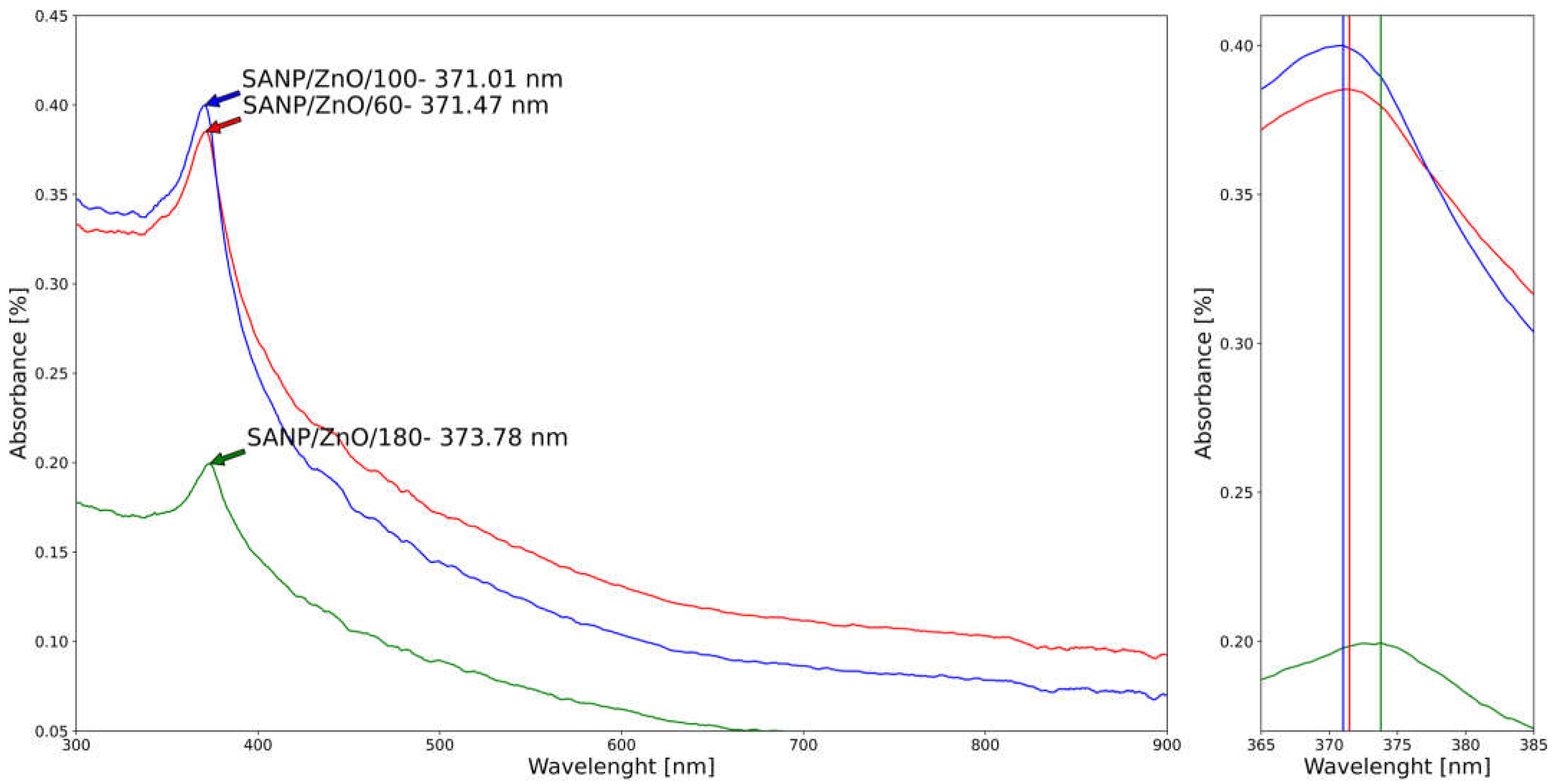
| Method | Common Parameters | Specific Parameters | Advantages |
|---|---|---|---|
| Chemical reduction | Solvent: The solvent used in the reaction can affect the process reaction, the size of the nanoparticles produced, and the stability of the nanoparticles Precursor: The type of precursor used can affect the size, shape, and uniformity of the nanoparticles produced. pH: A lower pH will make the metal ions more stable and the reducing agent less stable, resulting in smaller nanoparticles. Temperature: Generally, a higher temperature will result in a faster reaction and smaller nanoparticles. However, too high of a temperature can also lead to the formation of defects. Time: A longer reaction time will result in a more complete reaction, but it can also lead to the formation of defects in the final product. Stabilizer: Common stabilizers include polymers, surfactants, and capping agents. | Reducing agent concentration: A higher concentration of reducing agent will result in a faster reaction and smaller nanoparticles. However, too high of a concentration can also lead to the formation of impurities. Rate of reductant addition: A slower rate of addition will result in a more uniform distribution of the reducing agent and smaller nanoparticles. | Advantages: Simple and versatile. Disadvantages: Can be difficult to control the size and shape of the nanoparticles. |
| Sol-gel synthesis | Molar ratio: A higher molar ratio will result in a higher concentration of the precursor in the solution, which can lead to the formation of larger particles. | Advantages: Can produce high-quality nanoparticles with controllable size and shape. Disadvantages: The process can be time-consuming and requires specialized equipment. | |
| Hydrothermal synthesis | Pressure: A higher pressure will result in a higher solubility of the reactants and a faster reaction. The temperature of the reaction is typically in the range of 100–300 °C. Reaction time: The reaction time is in the range of 1–24 h. | Advantages: Synthesis of high-quality nanoparticles with controlled size and shape. Disadvantages: The hydrothermal process can be expensive and require specialized equipment. | |
| Microemulsion synthesis | Surfactant: The type of surfactant used can affect the size, shape, and stability of the micelles, as well as the rate of nucleation and growth of the nanoparticles. Cosurfactant: The cosurfactant is typically a short-chain alcohol, such as ethanol or butanol, which can also affect the size, shape, and stability of the micelles. Oil: The type of oil used can affect the size, shape, and stability of the micelles, as well as the rate of nucleation and growth of the nanoparticles. The temperature of the reaction is in the range of 25–80 °C. The reaction time is in the range of 1−24 h. | Advantages: Produces high-quality nanoparticles with controllable size and shape. Disadvantages: Complexity and time-consuming. The need for specialized equipment. | |
| Laser ablation | Wavelength: A wavelength that is well-absorbed by the material will result in more efficient ablation Power: A higher laser power will result in a deeper and more efficient ablation. Duration: The duration determines the amount of time that the beam is focused on the material being ablated and depends on the sublimation temperatures of the material. Spot size: A smaller spot size will result in a more localized and efficient ablation. Atmosphere: The atmosphere in which the ablation is performed can affect the ablation process. Target material: The properties of the target material, such as its reflectivity and absorption coefficient, can affect the ablation process. | The laser wavelength is typically in the range of 100–10,000 nm. The laser power is typically in the range of 1–100 watts. Pulse repetition rate: A higher pulse repetition rate will result in a faster ablation process. The pulse repetition of the laser rate is typically in the range of kHz to MHz. | Advantages: Afford the synthesis of nanoparticles with controlled size and shape. Disadvantages: The laser ablation process can be expensive and require specialized equipment. |
| Sample | Solar Flux (W/m2) | Pressure (mbar) | Amount (g) |
|---|---|---|---|
| SANP/ZnO/60 | 974 | 60 | 0.5 |
| SANP/ZnO/100 | 980 | 100 | 1.3 |
| SANP/ZnO/180 | 910 | 180 | 0.4 |
| SANP/NiZnO/60 | 953 | 60 | 0.8 |
| SANP/NiZnO100 | 961 | 100 | 0.2 |
| SANP/NiZnO/180 | 964 | 180 | 0.7 |
| Sample | D (nm) | a (Å) | c (Å) | c/a | V (Å3) | u (Å) |
|---|---|---|---|---|---|---|
| SANP/ZnO/60 | 24.23 | 3.252 | 5.211 | 1.6021 | 47.726 | 3.6273 |
| SANP/ZnO/100 | 27.38 | 3.2531 | 5.212 | 1.6024 | 47.766 | 3.6283 |
| SANP/ZnO/180 | 31.03 | 3.252 | 5.210 | 1.6021 | 47.712 | 3.6269 |
| Sample | D (nm) | a (Å) | c (Å) | c/a | V (Å3) | u (Å) |
|---|---|---|---|---|---|---|
| SANP/NiZnO/60 | 27.88 | 3.252 | 5.208 | 1.60128 | 47.717 | 3.6270 |
| SANP/NiZnO100 | 27.62 | 3.252 | 5.209 | 1.60124 | 47.723 | 3.6272 |
| SANP/NiZnO/180 | 33.02 | 3.252 | 5.209 | 1.6014 | 47.725 | 3.6273 |
Disclaimer/Publisher’s Note: The statements, opinions and data contained in all publications are solely those of the individual author(s) and contributor(s) and not of MDPI and/or the editor(s). MDPI and/or the editor(s) disclaim responsibility for any injury to people or property resulting from any ideas, methods, instructions or products referred to in the content. |
© 2023 by the authors. Licensee MDPI, Basel, Switzerland. This article is an open access article distributed under the terms and conditions of the Creative Commons Attribution (CC BY) license (https://creativecommons.org/licenses/by/4.0/).
Share and Cite
Schiopu, A.-G.; Oproescu, M.; Iana, V.G.; Ducu, C.M.; Moga, S.G.; Vîlcoci, D.S.; Cîrstea, G.; Calinescu, V.M.; Ahmed, O. Synthesis and Characterization of ZnO-Nanostructured Particles Produced by Solar Ablation. Materials 2023, 16, 6417. https://doi.org/10.3390/ma16196417
Schiopu A-G, Oproescu M, Iana VG, Ducu CM, Moga SG, Vîlcoci DS, Cîrstea G, Calinescu VM, Ahmed O. Synthesis and Characterization of ZnO-Nanostructured Particles Produced by Solar Ablation. Materials. 2023; 16(19):6417. https://doi.org/10.3390/ma16196417
Chicago/Turabian StyleSchiopu, Adriana-Gabriela, Mihai Oproescu, Vasile Gabriel Iana, Catalin Marian Ducu, Sorin Georgian Moga, Denisa Stefania Vîlcoci, Georgiana Cîrstea, Valentin Marian Calinescu, and Omar Ahmed. 2023. "Synthesis and Characterization of ZnO-Nanostructured Particles Produced by Solar Ablation" Materials 16, no. 19: 6417. https://doi.org/10.3390/ma16196417
APA StyleSchiopu, A.-G., Oproescu, M., Iana, V. G., Ducu, C. M., Moga, S. G., Vîlcoci, D. S., Cîrstea, G., Calinescu, V. M., & Ahmed, O. (2023). Synthesis and Characterization of ZnO-Nanostructured Particles Produced by Solar Ablation. Materials, 16(19), 6417. https://doi.org/10.3390/ma16196417









